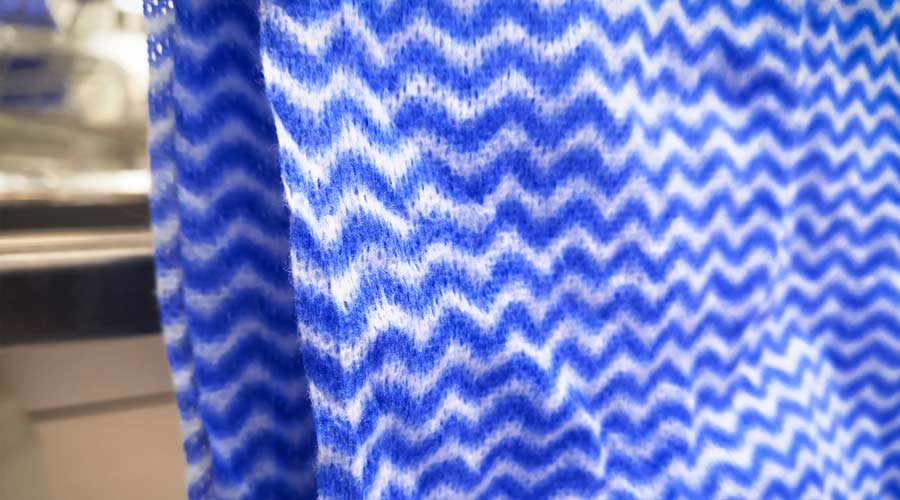
This article was originally published in 2016 and has been updated to reflect current information.
Microfiber cloths are available in two forms — reusable or disposable — and each has its own set of pros and cons. Most common are reusable cloths, which must be laundered after every use. When handled correctly, these cloths can last 100 to 1,000 washings. Disposable cloths, on the other hand, are typically pre-saturated with cleaning solution and should be discarded after a single use.
Reusable cloths are often preferred because they offer a long lifespan that helps offset the upfront costs of microfiber, which is often three or more times a similar cotton product.
Reusable microfiber isn’t without issues, however. It takes several gallons of water to wash a pound of microfiber cloths. They need to be washed after every use, which can quickly add up to a lot of water — a big problem for drought-prone areas like California.
Improper laundering of reusable microfiber can also cause shrinkage and damage. Worse, it can result in dirty cloths being returned to service or cross-contamination problems when cloths used for different areas (such as restrooms and operating rooms) are washed together.
Disposable cloths are often chosen because they are convenient and easy to use. They require less training and have far less potential for misuse and cross-contamination. Today, some facilities also opt for disposable to help reduce water consumption. On the downside, disposable cloths result in more waste shipped to a landfill. They are also more expensive.
Many hospitals use disposable microfiber for operating rooms, surgical suites and isolation areas. In these sensitive settings, reusable products can be risky if not laundered correctly. Using disposables means less chance frontline workers unknowingly re-contaminate surfaces because of a poorly washed cloth.
The decision to use disposables often comes down to cost. Facilities that don’t have their own on-site laundry service will have to pay a third party to wash and dry their microfiber. This can run as much as $.60 a piece, which typically makes disposables the more affordable option.
“Run the numbers and see if disposables make sense for you,” Hicks says. “It’s not an easy one-size-fits-all situation.”
Also, in healthcare settings where disinfection is critical, it’s important to have control over the laundering process. Handled improperly, microfiber cloths can come back from laundering with spores and bacteria still present, according to a study by Dr. Charles Gerba, a microbiologist at the University of Arizona.
“All reusables, whether mops or wipers, if you’re using them in healthcare should be laundered according to U.S. Centers for Disease Control and Prevention guidelines,” Hicks says.
That means you’ll need to purchase microfiber that can be laundered with bleach and be washed and dried at temperatures higher than 160 degrees. Confirm these specifications with the microfiber manufacturer because not all products are the same.
BECKY MOLLENKAMP is a freelance writer based in Des Moines, Iowa.
Choosing Between Cotton And Microfiber

 The Down and Dirty on Cleaning in Virus Season
The Down and Dirty on Cleaning in Virus Season How Surfactant Use is Expanding in Commercial Cleaning
How Surfactant Use is Expanding in Commercial Cleaning Operational Excellence Series 2025: Better Budgeting
Operational Excellence Series 2025: Better Budgeting